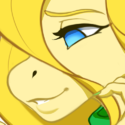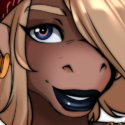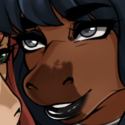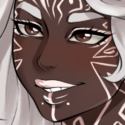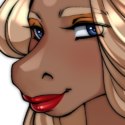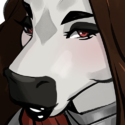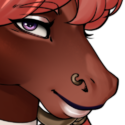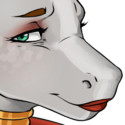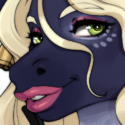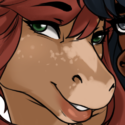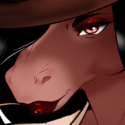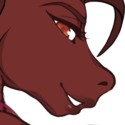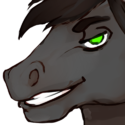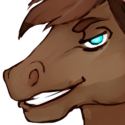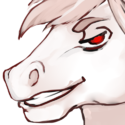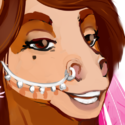Difference between revisions of "Marefolk"
m (→Characters) |
|||
| (17 intermediate revisions by 4 users not shown) | |||
| Line 1: | Line 1: | ||
| − | + | <blockquote> | |
| + | ''"Marefolk? They're beautiful, statuesque... dangerous. Don't let their jewelry and colorful silks fool you, these girls are real powerhouses! I've got a feeling that when they march into the valley to find a man, the farmer folk are lining up to get dragged off for the night!"''<br>—[[Cait|Caitriss Zethra]] (if [[Silly Mode]]:, Bicycle) | ||
| + | </blockquote> | ||
__TOC__ | __TOC__ | ||
==Writer Credit== | ==Writer Credit== | ||
| − | {|class="wikitable"border=" | + | {|class="wikitable bordered" border="1" cellpadding="2" style="margin-left: auto; margin-right: auto;text-align:left" |
| + | |- | ||
| + | !|[[Author-Savin|Savin]] | ||
|- | |- | ||
| − | | | + | | |
| − | |||
| − | |||
| − | |||
*Marefolk Codex Entry | *Marefolk Codex Entry | ||
|} | |} | ||
| + | |||
==Codex== | ==Codex== | ||
<blockquote> | <blockquote> | ||
| − | + | '''Name:''' Marefolk (s./pl.) | |
| − | + | '''Sexes:''' Male, Female. Note Society and Culture below. | |
| − | + | '''Height:''' From 6'9" to 7'9". | |
| − | + | '''Weight:''' Marefolk weigh considerably more than a similarly-sized human. | |
| − | + | '''Skin:''' Marefolk are covered in a short coat of silky fur, ranging in color from white and black to chestnuts and roans. | |
| − | + | '''Hair:''' Marefolk have additional, shaggy hair atop their heads and around their hooves. They have human hair colorations. | |
| − | + | '''Eyes:''' Equine in shape and color. | |
| − | + | '''Ears:''' Equine. | |
| − | + | '''Lifespan:''' Marefolk have roughly human lifespans, tending towards slightly shorter. | |
| − | + | '''Maturity:''' 18 years. | |
</blockquote> | </blockquote> | ||
===Description=== | ===Description=== | ||
---- | ---- | ||
<blockquote> | <blockquote> | ||
| − | When you say | + | When you say "marefolk," most Marchers think of a statuesque bipedal equine-morph, a woman with broad hips and weighty breasts wearing little but a band of silks around her hips and wielding a mighty hunting spear. |
Gifted with solid hooves, powerful muscles, and fertile physiques, it's no wonder that marefolk have been synonymous with the sensual female warrior since time immemorial. While they are most commonly seen on the wide-open savannahs and rolling plains of the southlands, the hardiest of all marefolk make their homes here in the Frost Marches. This is a tribe of women who are tough as the mountains that surround their lakeside village. | Gifted with solid hooves, powerful muscles, and fertile physiques, it's no wonder that marefolk have been synonymous with the sensual female warrior since time immemorial. While they are most commonly seen on the wide-open savannahs and rolling plains of the southlands, the hardiest of all marefolk make their homes here in the Frost Marches. This is a tribe of women who are tough as the mountains that surround their lakeside village. | ||
| Line 42: | Line 44: | ||
---- | ---- | ||
<blockquote> | <blockquote> | ||
| − | Marefolk tribes have been around since the beginning of recorded history, struggling to survive in the dark ages before | + | Marefolk tribes have been around since the beginning of recorded history, struggling to survive in the dark ages before Belhar alongside primitive human and elven tribes. While many of the civilized races joined the holy empire, marefolk staunchly refused to surrender their independence and remained as scattered groups of hunter-gatherers. Their society has changed little in the intervening centuries, as they suffered little from the Godswar or Belhar's fall. The marefolk have a rich oral history that likely contains stories rooted in histories long forgotten by other races, though they fiercely guard their skalds and songs from outsiders. |
</blockquote> | </blockquote> | ||
===Society and Culture=== | ===Society and Culture=== | ||
| Line 49: | Line 51: | ||
Marefolk typically organize themselves into tribes, and may live in either nomadic groups or in small fortified villages depending on the environment. Their society is almost entirely female, owing to male marefolk becoming violent and lust-crazed during puberty; only young males remain with the tribe. | Marefolk typically organize themselves into tribes, and may live in either nomadic groups or in small fortified villages depending on the environment. Their society is almost entirely female, owing to male marefolk becoming violent and lust-crazed during puberty; only young males remain with the tribe. | ||
| − | The continual struggle within marefolk culture is the dangerous volatility of the race's males. Some tribes have been known to keep one or two males chained for the women's use, but most throw young males out of the tribe to let them live as feral | + | The continual struggle within marefolk culture is the dangerous volatility of the race's males. Some tribes have been known to keep one or two males chained for the women's use, but most throw young males out of the tribe to let them live as feral "wild stallions," which makes securing them again for reproduction problematic. |
| − | This sexual dichotomy has forced the marefolk women to become skilled warriors, as they are required both to find and then secure a wild stallion if they are to continue their family lines. When stallions aren't forthcoming, or the tribe needs | + | This sexual dichotomy has forced the marefolk women to become skilled warriors, as they are required both to find and then secure a wild stallion if they are to continue their family lines. When stallions aren't forthcoming, or the tribe needs "new blood", marefolk have a reputation for marching out in armed warbands to find males of other races to mate with; some tribes take males by force if necessary, though in more modern times these reproductive expeditions are more likely to end in more amicable exchanges of gold or goods for sexual service. |
| − | In regions in which a permanent marefolk settlement has been established, there almost always evolves an annual ritual of local men allowing themselves to be | + | In regions in which a permanent marefolk settlement has been established, there almost always evolves an annual ritual of local men allowing themselves to be "captured" for a night of wild mating with the entire tribe of mares. In the same way that a young mare must secure her first stallion as a rite of passage into adulthood, some human communities consider it a young man's first foray into maturity that he must satisfy a randy warrior-mare. |
| − | + | ''(expanded if talked to [[Kavi]] about '''Males''')<br> | |
| + | Marefolk know all too well the fate of their men-folk come puberty, and some tribes have sought out some way to stop their sons from going mad with lust. The Frost Marches tribe has found a way to keep young stallions from going mad, but it's a terrible choice to ask a boy on the cusp of puberty to make: several generations of shamans have developed an alchemical admixture which, when taken, causes the stallion to stop developing as a man and begin to do so as a woman — the new (if [[Silly Mode]]: she)mare will grow into womanly breasts and hips and in all other ways save for a still-functional penis and testicles. | ||
| − | This, at least, allows the tribe to reliably reproduce without relying on dangerous stallion hunts. | + | This, at least, allows the tribe to reliably reproduce without relying on dangerous stallion hunts. |
</blockquote> | </blockquote> | ||
| − | |||
===Reproduction=== | ===Reproduction=== | ||
---- | ---- | ||
<blockquote> | <blockquote> | ||
| − | Marefolk reproduction is quite standard by all accounts. Males and females couple, and an eight-month pregnancy ensues that ends in the live birth of one or two children. Marefolk children are voracious, and their mothers are second only to minotaurs in terms of the sheer volume of their lactation. The size of the females' breasts is quite large to accommodate the amount of nursing newborns require. | + | Marefolk reproduction is quite standard by all accounts. Males and females couple, and an eight-month pregnancy ensues that ends in the live birth of one or two children. Marefolk children are voracious, and their mothers are second only to minotaurs in terms of the sheer volume of their lactation. The size of the females' breasts is quite large to accommodate the amount of nursing newborns require. |
| − | Whether it's because of the marefolk's much vaunted strength or their warrior heritage, marefolk milk was considered to be a valuable aphrodisiac and fertility enhancer among old | + | Whether it's because of the marefolk's much vaunted strength or their warrior heritage, marefolk milk was considered to be a valuable aphrodisiac and fertility enhancer among old Belhar. |
| − | Young marefolk are cared for by their entire tribe in a sort of communal childrearing, though they still are most closely bonded to their own parents. Male marefolk are usually evicted from their tribe during the onset of puberty, while females continue to remain in their mother's care until they reach adulthood. | + | Young marefolk are cared for by their entire tribe in a sort of communal childrearing, though they still are most closely bonded to their own parents. Male marefolk are usually evicted from their tribe during the onset of puberty, while females continue to remain in their mother's care until they reach adulthood. |
</blockquote> | </blockquote> | ||
==Codex Acquisition== | ==Codex Acquisition== | ||
Only one of the conditions below must be met to unlock the Marefolk Codex entry: | Only one of the conditions below must be met to unlock the Marefolk Codex entry: | ||
| − | *Met [[Atani]] | + | *Met [[Atani]] at the [[Marefolk Village]] |
| − | *Met [[Zuzaan]] | + | *Met [[Zuzaan]] at the [[Marefolk Village]] |
| − | *Met | + | *Met [[Crazy Horse|Crazy Horses]] in [[Harvest Valley]] |
| − | *Met [[Hashat]] | + | *Met [[Hashat]] in [[Harvest Valley]] |
| − | * | + | *Encountered a [[Marefolk Shaman]] in [[Harvest Valley]] |
==Other Information== | ==Other Information== | ||
| + | {|class="wikitable bordered" border="1" cellpadding="2" style="margin-left: auto; margin-right: auto; border: none; text-align:left" | ||
| + | |- | ||
| + | !|Adjectives | ||
| + | | | ||
| + | *Marefolk | ||
| + | *Horse | ||
| + | *Equine | ||
| + | |- | ||
| + | !|Cute Adjectives | ||
| + | | | ||
| + | *Horse | ||
| + | |- | ||
| + | !|Short Name | ||
| + | | | ||
| + | *Marefolk ''(masculine) | ||
| + | *Mare ''(feminine) | ||
| + | |} | ||
| + | ===Transformatives=== | ||
| + | ---- | ||
| + | *[[Mare's Barley]] | ||
| + | *[[Twisted Reed]] ''(corrupted) | ||
| − | == | + | ===Gameplay Attributes=== |
| − | *[[ | + | ---- |
| + | {|class="wikitable bordered" border="1" cellpadding="2" style="margin-left: auto; margin-right: auto; border: none; text-align:left" | ||
| + | |- | ||
| + | !|Affinities | ||
| + | | | ||
| + | *[[Presence]] | ||
| + | *[[Toughness]] | ||
| + | *[[Strength]] | ||
| + | |} | ||
| + | |||
| + | ==Characters== | ||
| + | <tabber> | ||
| + | Notable characters= | ||
| + | {|class="table" style="margin-left: auto; margin-right: auto; border: 2px solid #929292; cellpadding:1px; " | ||
| + | |- | ||
| + | |{{WikiHeadshot-index|name=Atani}}{{WikiHeadshot-index|name=Aunora}}{{WikiHeadshot-index|name=Edessari}}{{WikiHeadshot-index|name=Hashat|text=(half-[[Minotaurs|minotaur]])}}{{WikiHeadshot-index|name=Ikora}}{{WikiHeadshot-index|name=Imitre}}{{WikiHeadshot-index|name=Klemaia}} | ||
| + | |- | ||
| + | |{{WikiHeadshot-index|name=Naiyana}}{{WikiHeadshot-index|name=Tarah|text=(half-[[Minotaurs|minotaur]])}}{{WikiHeadshot-index|name=Wredi}}{{WikiHeadshot-index|name=Yani}}{{WikiHeadshot-index|name=Zuzaan}} | ||
| + | |} | ||
| + | |-| | ||
| + | Generic characters= | ||
| + | {|class="table" style="margin-left: auto; margin-right: auto; border: 2px solid #929292; cellpadding:1px; " | ||
| + | |- | ||
| + | |{{WikiHeadshot-index|name=Crazy Horse|exte=Black}}{{WikiHeadshot-index|name=Crazy Horse|exte=Brown}}{{WikiHeadshot-index|name=Crazy Horse|exte=White}}{{WikiHeadshot-index|name=Marefolk Shaman}} | ||
| + | |} | ||
| + | </tabber> | ||
==Trivia== | ==Trivia== | ||
*The Marefolk are based off of Mongolian culture | *The Marefolk are based off of Mongolian culture | ||
| − | |||
| − | |||
| − | |||
| − | |||
| − | |||
| − | |||
| − | |||
| − | |||
[[Category:Races]] | [[Category:Races]] | ||
Latest revision as of 07:41, 30 November 2024
"Marefolk? They're beautiful, statuesque... dangerous. Don't let their jewelry and colorful silks fool you, these girls are real powerhouses! I've got a feeling that when they march into the valley to find a man, the farmer folk are lining up to get dragged off for the night!"
—Caitriss Zethra (if Silly Mode:, Bicycle)
Writer Credit
| Savin |
|---|
|
Codex
Name: Marefolk (s./pl.)
Sexes: Male, Female. Note Society and Culture below.
Height: From 6'9" to 7'9".
Weight: Marefolk weigh considerably more than a similarly-sized human.
Skin: Marefolk are covered in a short coat of silky fur, ranging in color from white and black to chestnuts and roans.
Hair: Marefolk have additional, shaggy hair atop their heads and around their hooves. They have human hair colorations.
Eyes: Equine in shape and color.
Ears: Equine.
Lifespan: Marefolk have roughly human lifespans, tending towards slightly shorter.
Maturity: 18 years.
Description
When you say "marefolk," most Marchers think of a statuesque bipedal equine-morph, a woman with broad hips and weighty breasts wearing little but a band of silks around her hips and wielding a mighty hunting spear.
Gifted with solid hooves, powerful muscles, and fertile physiques, it's no wonder that marefolk have been synonymous with the sensual female warrior since time immemorial. While they are most commonly seen on the wide-open savannahs and rolling plains of the southlands, the hardiest of all marefolk make their homes here in the Frost Marches. This is a tribe of women who are tough as the mountains that surround their lakeside village.
History
Marefolk tribes have been around since the beginning of recorded history, struggling to survive in the dark ages before Belhar alongside primitive human and elven tribes. While many of the civilized races joined the holy empire, marefolk staunchly refused to surrender their independence and remained as scattered groups of hunter-gatherers. Their society has changed little in the intervening centuries, as they suffered little from the Godswar or Belhar's fall. The marefolk have a rich oral history that likely contains stories rooted in histories long forgotten by other races, though they fiercely guard their skalds and songs from outsiders.
Society and Culture
Marefolk typically organize themselves into tribes, and may live in either nomadic groups or in small fortified villages depending on the environment. Their society is almost entirely female, owing to male marefolk becoming violent and lust-crazed during puberty; only young males remain with the tribe.
The continual struggle within marefolk culture is the dangerous volatility of the race's males. Some tribes have been known to keep one or two males chained for the women's use, but most throw young males out of the tribe to let them live as feral "wild stallions," which makes securing them again for reproduction problematic.
This sexual dichotomy has forced the marefolk women to become skilled warriors, as they are required both to find and then secure a wild stallion if they are to continue their family lines. When stallions aren't forthcoming, or the tribe needs "new blood", marefolk have a reputation for marching out in armed warbands to find males of other races to mate with; some tribes take males by force if necessary, though in more modern times these reproductive expeditions are more likely to end in more amicable exchanges of gold or goods for sexual service.
In regions in which a permanent marefolk settlement has been established, there almost always evolves an annual ritual of local men allowing themselves to be "captured" for a night of wild mating with the entire tribe of mares. In the same way that a young mare must secure her first stallion as a rite of passage into adulthood, some human communities consider it a young man's first foray into maturity that he must satisfy a randy warrior-mare.
(expanded if talked to Kavi about Males)
Marefolk know all too well the fate of their men-folk come puberty, and some tribes have sought out some way to stop their sons from going mad with lust. The Frost Marches tribe has found a way to keep young stallions from going mad, but it's a terrible choice to ask a boy on the cusp of puberty to make: several generations of shamans have developed an alchemical admixture which, when taken, causes the stallion to stop developing as a man and begin to do so as a woman — the new (if Silly Mode: she)mare will grow into womanly breasts and hips and in all other ways save for a still-functional penis and testicles.This, at least, allows the tribe to reliably reproduce without relying on dangerous stallion hunts.
Reproduction
Marefolk reproduction is quite standard by all accounts. Males and females couple, and an eight-month pregnancy ensues that ends in the live birth of one or two children. Marefolk children are voracious, and their mothers are second only to minotaurs in terms of the sheer volume of their lactation. The size of the females' breasts is quite large to accommodate the amount of nursing newborns require.
Whether it's because of the marefolk's much vaunted strength or their warrior heritage, marefolk milk was considered to be a valuable aphrodisiac and fertility enhancer among old Belhar.
Young marefolk are cared for by their entire tribe in a sort of communal childrearing, though they still are most closely bonded to their own parents. Male marefolk are usually evicted from their tribe during the onset of puberty, while females continue to remain in their mother's care until they reach adulthood.
Codex Acquisition
Only one of the conditions below must be met to unlock the Marefolk Codex entry:
- Met Atani at the Marefolk Village
- Met Zuzaan at the Marefolk Village
- Met Crazy Horses in Harvest Valley
- Met Hashat in Harvest Valley
- Encountered a Marefolk Shaman in Harvest Valley
Other Information
| Adjectives |
|
|---|---|
| Cute Adjectives |
|
| Short Name |
|
Transformatives
- Mare's Barley
- Twisted Reed (corrupted)
Gameplay Attributes
| Affinities |
|---|
Characters
Trivia
- The Marefolk are based off of Mongolian culture
